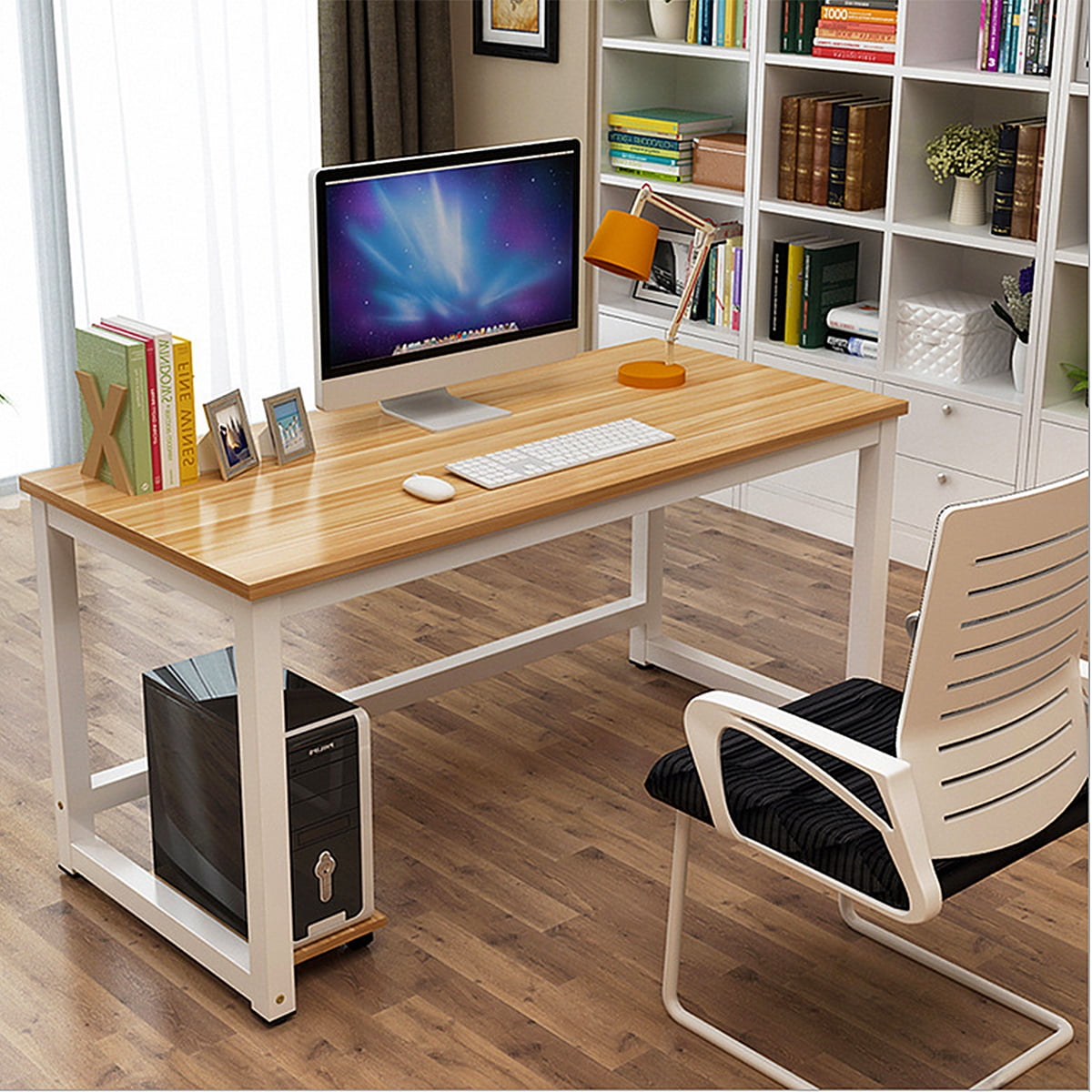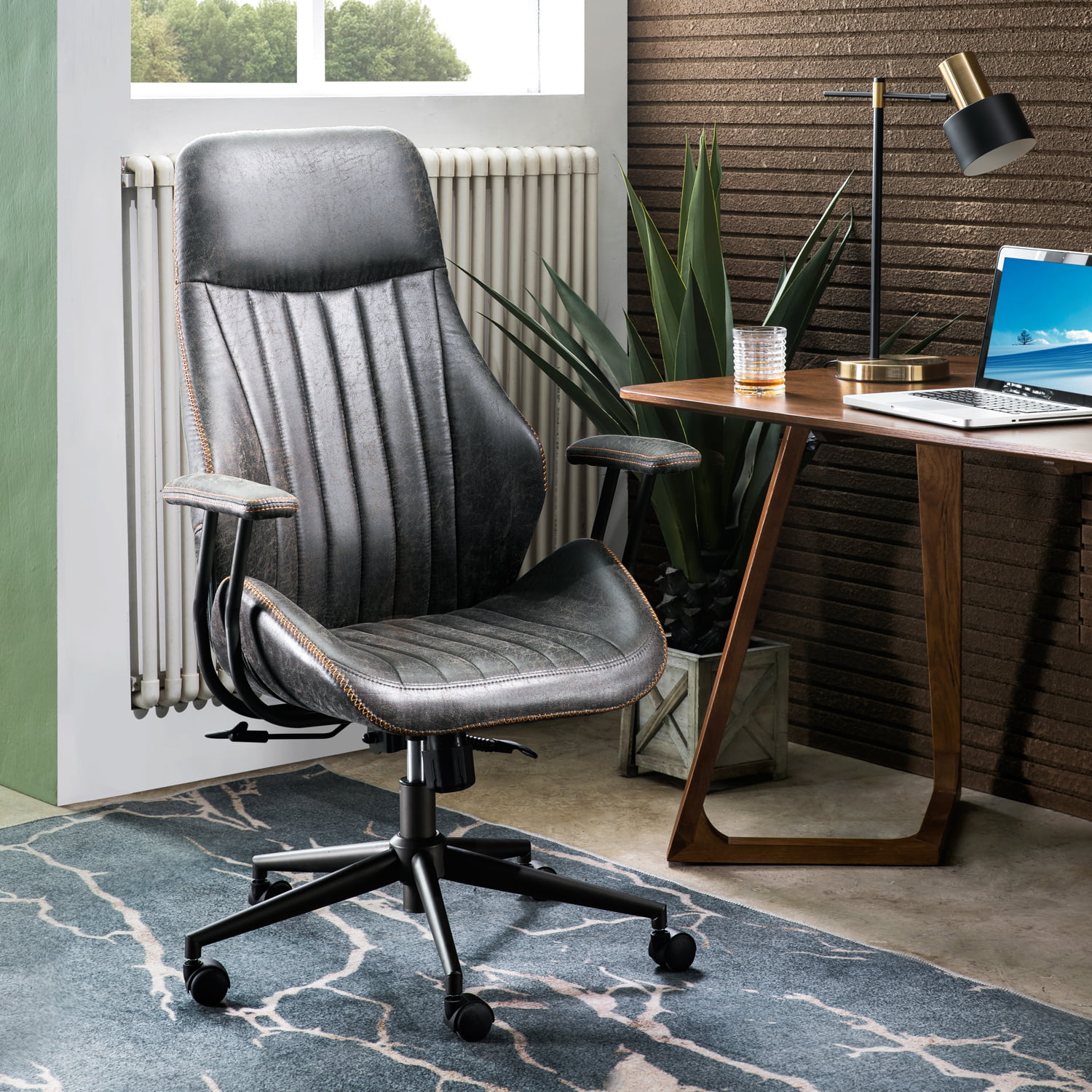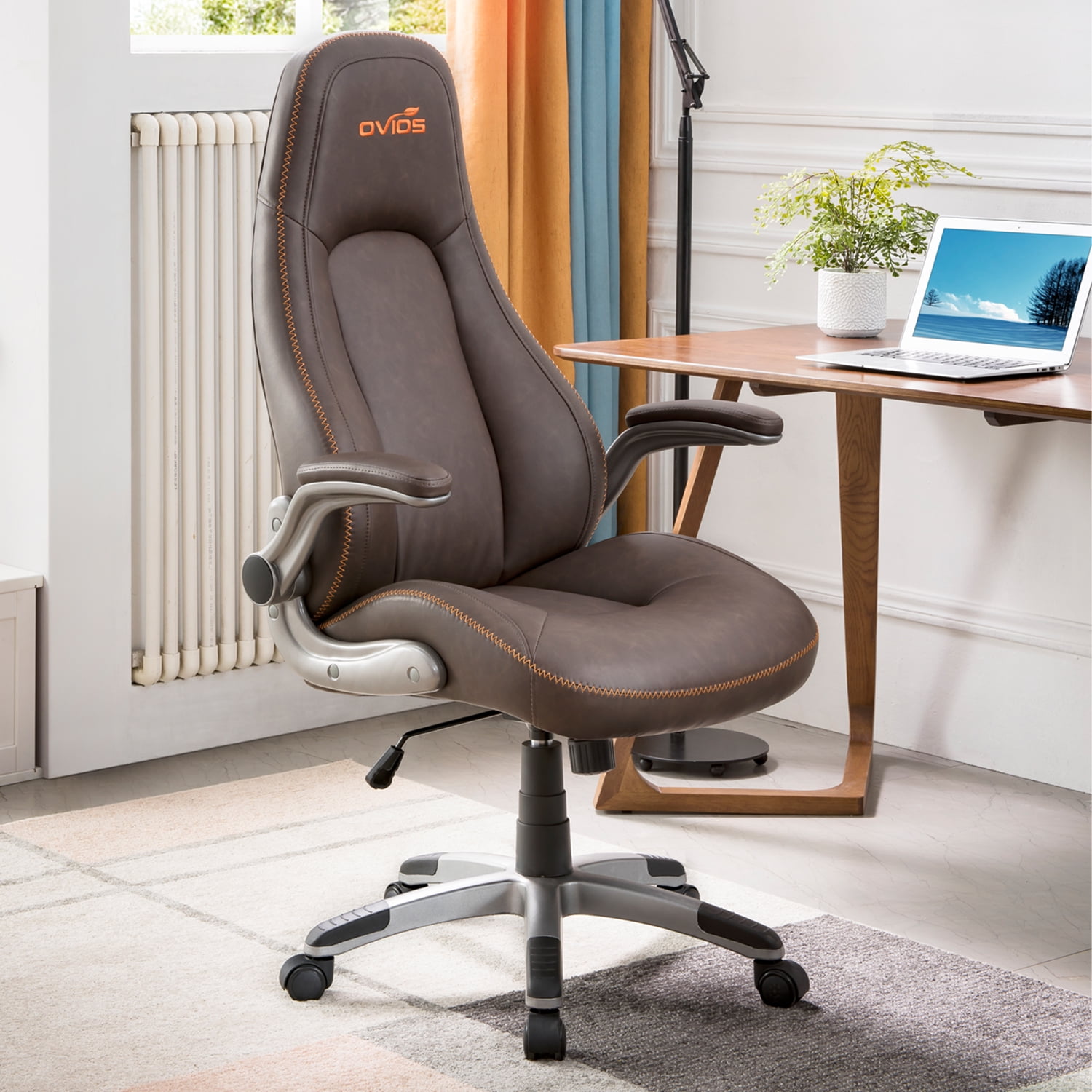Ergonomics and Functionality

In the modern workplace, where prolonged hours are spent seated at computers, the importance of ergonomic design in computer desks and chairs cannot be overstated. Ergonomics focuses on optimizing the relationship between humans and their working environment to enhance comfort, reduce strain, and improve overall well-being. This section explores the crucial role of ergonomics in computer desks and chairs, highlighting features that promote good posture and reduce the risk of musculoskeletal disorders.
Ergonomic Design Features
Ergonomic design principles aim to minimize physical strain and promote natural body postures. Features that embody this philosophy include:
- Adjustable Height: Adjustable height desks and chairs allow users to customize their workspace to fit their individual needs. This flexibility enables users to switch between sitting and standing positions, reducing the risk of back pain and promoting better circulation.
- Lumbar Support: Lumbar support features in chairs provide a contoured backrest that conforms to the natural curve of the lower back. This support helps maintain proper spinal alignment and reduces pressure on the lumbar region, preventing pain and fatigue.
- Armrests: Adjustable armrests allow users to position their arms at a comfortable angle, reducing strain on the shoulders, neck, and wrists.
- Seat Depth and Angle: Chairs with adjustable seat depth and angle enable users to find the optimal position for their thighs and legs, minimizing pressure points and promoting blood circulation.
Adjustable Height Desks and Chairs
Adjustable height desks and chairs offer significant benefits for both physical health and productivity. The ability to transition between sitting and standing positions throughout the day promotes movement and reduces the risk of sedentary-related health issues.
- Reduced Back Pain: By alternating between sitting and standing, adjustable desks and chairs help to reduce the strain on the back muscles, decreasing the risk of back pain and improving overall posture.
- Improved Circulation: Standing for part of the day helps improve blood circulation, reducing the risk of varicose veins and other circulatory issues.
- Increased Energy Levels: Studies have shown that standing for a portion of the workday can boost energy levels and reduce feelings of fatigue.
- Enhanced Productivity: Regular movement and changes in posture can enhance focus and concentration, leading to increased productivity.
Innovative Features
Modern computer desks and chairs incorporate innovative features that enhance functionality and user experience.
- Built-in Cable Management: Desks with integrated cable management systems help to keep wires organized and out of sight, reducing clutter and creating a cleaner, more professional workspace.
- Integrated Power Outlets: Desks with built-in power outlets provide convenient access to power sources, eliminating the need for bulky power strips and creating a more streamlined workspace.
- Wireless Charging: Some desks and chairs offer wireless charging pads, allowing users to charge their devices without the need for cables.
- Smart Features: Advanced models may incorporate smart features such as automatic height adjustment, voice control, and integrated lighting systems.
Material Considerations
The choice of materials for desk and chair construction significantly impacts their durability, comfort, and aesthetics.
- Wood: Wood is a durable and aesthetically pleasing material that can add warmth and sophistication to a workspace. However, wood can be susceptible to scratches and water damage, and its cost can vary depending on the type of wood used.
- Metal: Metal desks and chairs offer strength, durability, and a modern look. They are typically more affordable than wood but can be cold to the touch and prone to dents.
- Glass: Glass desks offer a sleek and modern aesthetic, but they can be fragile and susceptible to scratches.
- Fabric: Fabric upholstery is comfortable and available in a wide range of colors and patterns. However, fabric can be prone to stains and wear and tear, and it may require regular cleaning.
- Leather: Leather upholstery is durable, luxurious, and adds a touch of sophistication to a workspace. However, leather can be expensive and requires regular cleaning and conditioning.
Style and Aesthetics

In the realm of modern computer desks and chairs, aesthetics play a crucial role in creating a functional and inspiring workspace. Beyond ergonomics and functionality, the visual appeal of these furniture pieces significantly influences the overall ambiance and productivity of a work environment.
Current Trends in Design
Modern computer desk and chair design reflects contemporary trends that prioritize clean lines, minimalist aesthetics, and a focus on functionality. The use of sustainable materials and eco-friendly practices is increasingly prominent, reflecting a growing awareness of environmental concerns.
- Minimalist Design: Characterized by simplicity, clean lines, and a focus on functionality, minimalist designs often feature sleek, geometric shapes and neutral color palettes. This style emphasizes the absence of unnecessary ornamentation, creating a sense of calm and order in the workspace.
- Industrial Chic: Industrial-style desks and chairs often incorporate raw materials like metal, wood, and leather, showcasing a rugged and utilitarian aesthetic. Exposed metal frames, distressed finishes, and vintage accents contribute to the industrial vibe, creating a unique and edgy workspace.
- Scandinavian Design: Scandinavian design emphasizes simplicity, functionality, and natural materials. Desks and chairs in this style often feature light wood finishes, minimalist designs, and a focus on comfort. The use of natural materials like wood and wool contributes to a warm and inviting atmosphere.
- Contemporary Design: Contemporary design encompasses a wide range of styles, characterized by a modern and sophisticated aesthetic. Desks and chairs in this style often feature sleek lines, innovative materials, and bold color combinations. They embrace contemporary trends while maintaining a timeless appeal.
Key Design Elements
Several key design elements contribute to a modern aesthetic in computer desks and chairs:
- Clean Lines and Geometric Shapes: Modern designs often feature simple, clean lines and geometric shapes that create a sense of order and sophistication.
- Minimalist Ornamentation: Modern aesthetics prioritize functionality over excessive ornamentation. Desks and chairs often feature minimal embellishments, allowing the natural beauty of the materials to shine through.
- Sustainable Materials: The use of sustainable materials like bamboo, recycled plastic, and reclaimed wood is increasingly common in modern design, reflecting a growing awareness of environmental concerns.
- Ergonomic Features: Modern computer desks and chairs prioritize user comfort and functionality. Ergonomic features such as adjustable height, lumbar support, and armrests contribute to both aesthetics and practicality.
Materials and Finishes
The choice of materials and finishes significantly impacts the overall look and feel of a computer desk and chair.
- Wood: Wood is a classic material that adds warmth and natural beauty to any workspace. Different wood species, such as oak, walnut, and maple, offer unique grain patterns and colors. Finishes like natural oil, stain, or lacquer can enhance the wood’s natural beauty or create a more polished look.
- Metal: Metal is a durable and versatile material that can be used to create a variety of looks, from sleek and modern to industrial and rustic. Common metals used in computer desks and chairs include steel, aluminum, and iron. Finishes like chrome, powder coating, and brushed metal can enhance the metal’s aesthetic appeal.
- Glass: Glass can add a touch of elegance and sophistication to a workspace. It can be used for desktops, shelves, or accents, providing a sleek and modern look. Tempered glass is often used for its durability and safety.
- Fabric: Fabric upholstery is often used for chair seats and backs, offering comfort and style. A wide variety of fabrics, colors, and textures are available, allowing for personalization and customization.
- Leather: Leather upholstery is a luxurious and durable option that adds a touch of sophistication to any workspace. It ages beautifully, developing a unique patina over time.
Popular Styles Compared
| Style | Characteristics | Materials | Color Palette | Minimalist | Simple, clean lines, geometric shapes, focus on functionality | Metal, wood, glass, natural fabrics | Neutral colors (white, black, gray, beige), pops of color in accents | Industrial | Raw materials, exposed metal frames, distressed finishes, vintage accents | Metal, wood, leather, reclaimed materials | Darker colors (black, brown, gray), exposed metal finishes | Scandinavian | Simplicity, functionality, natural materials | Light wood, natural fabrics, wool, cotton | Light colors (white, beige, gray), natural wood tones | Contemporary | Sleek lines, innovative materials, bold color combinations, modern and sophisticated aesthetic | Metal, wood, glass, high-tech materials | Bold colors, contrasting accents, metallic finishes |
|---|
Designed Desk and Chair Combination: Minimalist Style
This minimalist desk and chair combination prioritizes clean lines, functionality, and a sense of calm.
* Desk: A sleek, rectangular desk made from natural oak with a clear lacquer finish. The desk features a minimalist design with a single drawer and open shelving for storage.
* Chair: A modern, ergonomic chair with a black mesh back and seat, offering breathable comfort. The chair features adjustable height, lumbar support, and armrests. The base is made from polished aluminum, adding a touch of sophistication.
* Color Palette: The color palette is dominated by neutral tones, with the natural oak desk providing warmth and contrast against the black mesh chair. A single accent color, such as a vibrant blue or green, can be incorporated through accessories, such as a desk lamp or a storage box.
Choosing the Right Desk and Chair: Modern Computer Desk And Chair

Selecting the right computer desk and chair is crucial for creating a comfortable and productive workspace. The right setup can help prevent discomfort, pain, and injuries, while also promoting better posture and focus.
Factors to Consider
Before diving into specific choices, it’s essential to consider a few key factors that will influence your decision.
- Workspace Size: Measure your available space to determine the appropriate desk dimensions. Consider the size of your monitor, keyboard, and other peripherals. A good rule of thumb is to leave at least 24 inches of clearance on each side of the desk for comfortable movement.
- Intended Use: The intended use of your workspace will affect your choice of desk and chair. For example, if you’re a gamer, you’ll need a desk with enough space for a large monitor and peripherals, and a chair that provides good support for long gaming sessions.
- Budget: Determine a budget range for your desk and chair. Prices can vary significantly, so it’s important to set a realistic budget to help narrow down your options.
- Personal Style: Choose a desk and chair that complement your personal style and decor. There are many styles available, from modern and minimalist to traditional and rustic.
Desk Dimensions, Modern computer desk and chair
Once you have a clear idea of your workspace size and intended use, you can start thinking about the dimensions of your desk.
- Desk Depth: The depth of the desk should be at least 24 inches to provide enough space for your keyboard, mouse, and other peripherals. A deeper desk may be preferable for those who use multiple monitors or have a lot of desk accessories.
- Desk Width: The width of the desk should be at least 48 inches to provide enough space for your monitor, keyboard, and other peripherals. If you have a lot of desk accessories or work with large documents, you may need a wider desk.
- Desk Height: The height of the desk should be comfortable for you to work at. The ideal height will vary depending on your height and posture. You should be able to sit with your feet flat on the floor and your elbows at a 90-degree angle.
Chair Dimensions and Adjustments
Choosing the right chair is equally important for a comfortable and ergonomic workspace.
- Seat Height: The seat height of the chair should be adjustable to allow you to sit with your feet flat on the floor and your thighs parallel to the floor. This will help to prevent pressure on the backs of your thighs and knees.
- Seat Depth: The seat depth of the chair should be adjustable to allow you to sit with your back comfortably against the backrest. There should be about 2-3 inches of space between the edge of the seat and the back of your knees.
- Backrest Height: The backrest height of the chair should be adjustable to provide support for your lower back. The backrest should be high enough to support your entire back, from your lower back to your shoulders.
- Lumbar Support: A good chair will have adjustable lumbar support to provide extra support for your lower back. This can help to prevent back pain and fatigue.
- Armrests: Armrests should be adjustable to allow you to rest your arms comfortably at a 90-degree angle. They should be positioned so that your shoulders are relaxed and your wrists are not bent at an awkward angle.
Adjusting Your Chair for Optimal Comfort
Once you have selected a chair, it’s important to adjust it properly for optimal comfort and support.
- Seat Height: Adjust the seat height so that your feet are flat on the floor and your thighs are parallel to the floor.
- Seat Depth: Adjust the seat depth so that there is about 2-3 inches of space between the edge of the seat and the back of your knees.
- Backrest Height: Adjust the backrest height so that it supports your entire back, from your lower back to your shoulders.
- Lumbar Support: Adjust the lumbar support to provide extra support for your lower back.
- Armrests: Adjust the armrests so that your arms are comfortably resting at a 90-degree angle.
A modern computer desk and chair can be the perfect anchor for your home office, offering both style and functionality. And just like the latest kitchen design trends favor the gray bottom cabinets white top cabinets look, a modern desk can seamlessly blend with any decor, creating a workspace that’s both inspiring and efficient.
Whether you prefer sleek minimalism or a touch of industrial chic, a modern desk and chair can help you achieve a workspace that truly reflects your personal style.
Modern computer desks and chairs are all about creating a workspace that’s both functional and stylish. A sleek white desk chair can really elevate the look of your setup, and if you’re designing a website or presentation, a high-quality image with a transparent background can be a lifesaver.
Check out this guide for all the tips and tricks on finding the perfect white desk chair transparent background for your project. With the right chair and a little creativity, you can make your workspace truly stand out!
